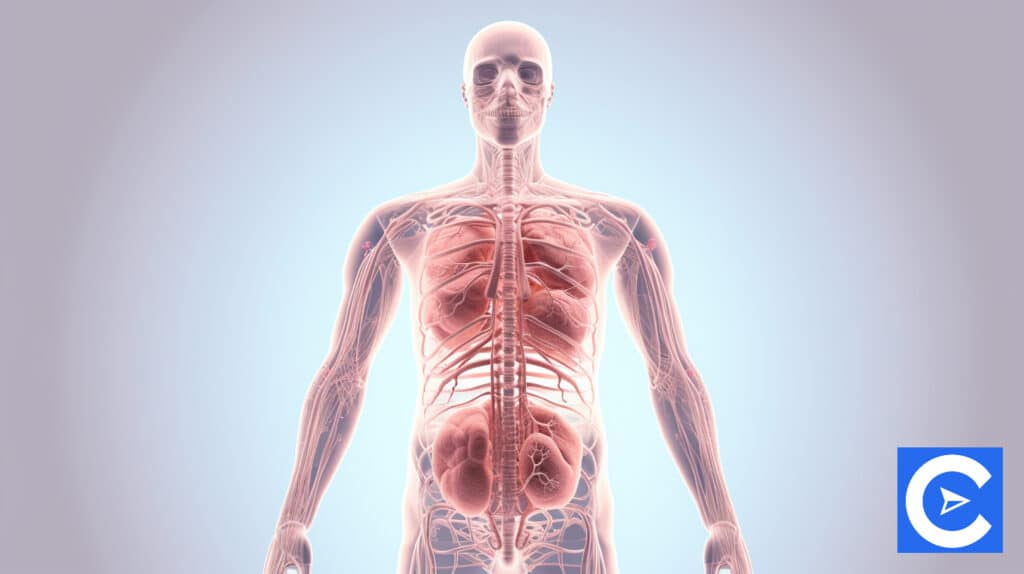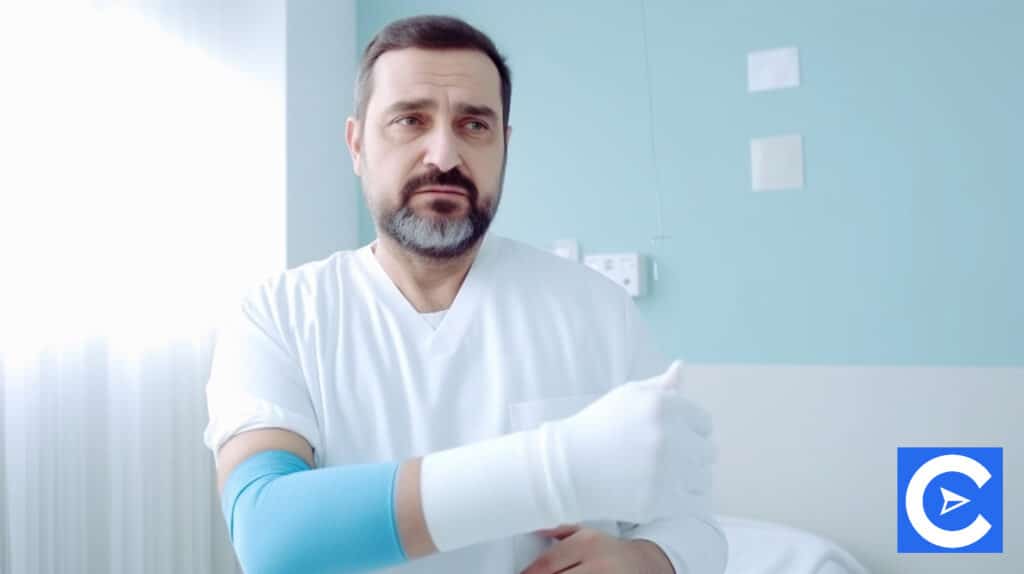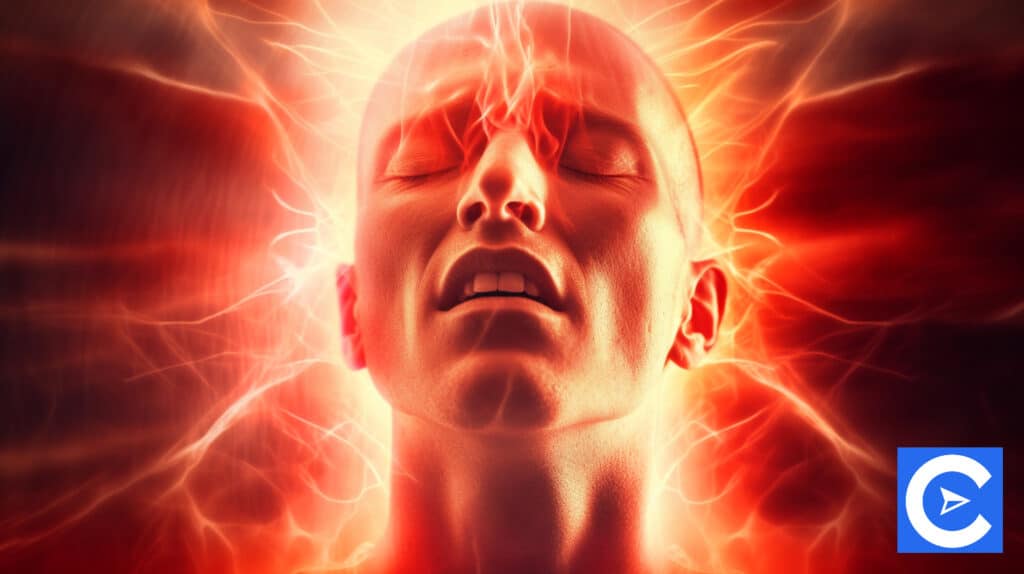Other Free NCLEX PN Study Guides:
There are 8 Modules in NCLEX PN Study Guide. Here you can navigate all the NCLEX PN Study guide modules.
- NCLEX Study Guide Home
- Module 1 | Coordinated Care Of the Patient
- Module 2 | Overall Safety and Control of Infections
- Module 3 | The promotion of health and maintenance
- Module 4 | Integrity in psychosocial functioning
- Module 5 | Providing Basic Care and Ensuring Patient Comfort
- Module 6 | Therapies: Pharmacological and parenteral
- Module 7 | Potential risk reduction
- Module 8.1 | Adapting physiologically
- Module 8.2 | Adapting physiologically
- Module 8.3 | Adapting physiologically
let’s get started right away.
Integumentary pathophysiology

Infectious wounds
Surgical wounds can be classified into four categories:
- Class 1: Clean, for example, those from biopsies and laparoscopic surgeries
- Class 2: Clean contaminated, for example, those from GU and GI surgeries
- Class 3: Contaminated, for example, a traumatic wound like a gunshot
- Class 4: Dirty, for example, a traumatic wound inflicted by a dirty knife
Tissue damage
There are several ways to classify this, including:
- Abrasion
- Contusion
- Laceration
- Avulsion
Traumatic wounds
Various types of trauma can cause wounds, including cuts, punctures, gunshot wounds, abrasions, bites, and force trauma.
After stabilizing the patient, wound management is required.
A wound should be cleaned and all foreign objects should be removed so that infection can be prevented.
A traumatic wound may present with the following symptoms:
- Pain
- Erythema
- Edema
- Bleeding
Hemorrhagic shock may result from severe traumatic injuries.
Besides tachycardia, hypotension, low urine output, and tachypnea, this will include other indicators.
A wound’s overall severity determines its treatment.
As well as irrigation and debridement, the wound should be closed with fibrin glue, sutures or staples, and the patient can receive antibiotics and a tetanus injection.
Foreign bodies in subcutaneous tissue
Among foreign substances that can be found in wounds are metals, plastics, glass, and woods.
The following symptoms will be present:
- Infection or an inflammatory response in the area where the foreign body sits
- Pain
- Pseudotumor
- Osteomyelitis
Depending on the severity of the trauma caused by removing the foreign body, in some cases, if it is not causing problems, it may be better to leave it.
It is always advisable to remove wood foreign bodies, however.
Your coursework explains how foreign bodies are removed.
High-pressure injection injuries
A high-pressure injury is one that enters under the tissue.
The list can include items like nails as well as liquids, paints, and oils.
Swelling and pain will be present in the area where the material entered under the skin, as well as ischemia from time to time.
There are also the following symptoms that could occur:
- Contractures
- Fractures
- Fibrosis
- Fistulae
- Amputations
It may be appropriate to prescribe tetanus prophylaxis, antibiotics, and supportive care depending on the severity of the injury.
It may be necessary for the patient to undergo surgery in some cases.
To learn how many of these procedures are performed, look through your coursework that deals with integumentary procedures and interventions.
Otitis externa, Temporal arteritis and recurrent epistaxis

Recurrent epistaxis
In young children between 2 and 10 years of age, particularly boys, this is prevalent.
Several factors are linked to recurrent epistaxis, such as dry climates, cold winters, and nose picking.
Incidents between the ages of 50 and 80 are more likely to occur and they can be brought on by the use of anticoagulants and NSAIDs.
In the case of posterior nares bleeding, major blood loss is possible.
Among the treatments are:
- Positioning the patient upright. They should then lean forward. Blood stops flowing down their throats as a result
- It is important to apply pressure underneath the nares. Pinched nostrils is an alternative. For around 10 minutes, you should press this down firmly
- Bleeding that is severe may require the use of topical vasoconstrictors and/or packing
- By using humidifiers, irritation can be reduced
Temporal arteritis (TA)
During this condition, blood vessels in the head become inflamed.
The thoracic aorta and its branches, as well as the temporal artery, are usually affected.
There is an association between TA and polymyalgia rheumatica in approximately 30% of patients.
Additionally, it can be associated with lupus erythematous, rheumatoid arthritis, and Sjogren syndrome.
People over the age of 50 are at risk for this progressive condition, which can result in blindness.
There are several symptoms associated with this condition:
- Headaches
- Fluctuations in vision, loss of vision
- Pain in the upper extremities, tongue, and jaw intermittently
- Fever
The patient should be treated with Prednisone to prevent blindness while the temporal artery biopsy can be carried out for a conclusive diagnosis.
Otitis externa
An infected ear canal is what this term refers to.
A mycotic or bacterial infection can cause this condition.
Swimmers often suffer from this because pool chlorine kills the normal flora in their ear canals, causing bacteria to thrive.
Infections caused by fungi, diabetes, and steroids can increase the risk of this disorder.
The following symptoms are present:
- Exudate, swelling, and pain
- Itching (most notable in fungal infections)
- Pustular lesions that are red in color
- Tympanic membrane covered in fungus that shows as black spots
The treatment includes:
- Using saline or Burow’s solution irrigate and clean out the ear
- If bacteria are present, ear drops can be used
- If a fungus is present, a solution of 5% boric acid in ethanol can be used or a clotrimazole-miconazole solution too
- As needed, analgesics can be administered
TMD, sinusitis and Otitis media

Otitis media
Middle ear inflammation usually occurs as a result of allergic rhinitis or an upper respiratory tract infection.
During eustachian tube swelling, fluid pools in the mucous membrane, contributing to the infection.
The four most common forms of this are:
- Acute: 1-3 week period
- Recurrent: Around 3 examples in six months or 4 to 6 in a period of a year
- Bullous: This is an acute infection leading to pressure in the middle ear, hearing loss, and pain
- Chronic: Constant for a period of three months with drainage and hearing loss as well as thick retracted tympanic membrane
An inflamed tympanic membrane, purulent fluid, or a bulging tympanic membrane indicate this type of infection.
Most infections are treated with antibiotics, but in some cases tympanostomies and pressure-equalizing tubes can be prescribed.
Sinusitis
An inflamed nasal sinus can cause discomfort as drainage is obstructed.
The following symptoms are present:
- Pain over the sinuses
- Dull aches behind the eye and ethmoidal are present
- Tenderness of the sinuses
- Purulent exudate
- Nasal cavity mucosa
There are several treatment options available:
- Analgesia for symptomatic relief
- Nasal irrigation and topical decongestants
- If problems persist for a long period (more than 7 days), antimicrobial therapy may be necessary
- The use of steroid nasal sprays
Temporomandibular disorder (TMD)
Temporomandibular joint dysfunction as well as muscle and ligament instability can cause jaw pain.
Injuries the patient has sustained, such as whiplash, can result in this.
They may clench or grind their teeth to cause this, while TMD can also result from arthritis and stress.
The following are symptoms of TMD:
- Jaw movements leading to popping and clicking sounds
- Locked jaw or limited movement of the jaw
- Pain when moving the jaw and chewing
- Dizziness
- Headaches
- Toothache
For diagnosis, a CT or MRI scan may be needed, while dental exams and x-rays can rule out disorders.
Among the treatments are:
- Ice packs and jaw stretching exercises
- Avoiding hard foods that will lead to heavy chewing
- Pain and inflammation relieved through NSAIDs
- Mouthguards when sleeping
- Dental treatment to improve bite, if necessary
Shock and infection

Severe infection ranges
There are several terms used to describe severe infections, including:
- Bacteremia occurs when bacteria are present in the blood but there is no systemic infection
- Septicemia is an infection caused by pathogens (either bacteria or fungi) in the blood
- Systemic inflammatory response syndrome (SIRS) occurs in many organ systems and is a generalized inflammatory process
- Sepsis occurs when there is a local or systemic infection with SIRS
- Severe sepsis encompasses both sepsis and SIRS infections
- Septic shock occurs when severe sepsis progresses into refractory hypotension despite treatment
- Multi-organ dysfunction syndrome (MODS): This is the most common cause of sepsis death. It can cause ARD while cardiac function and renal function is depressed following acute tubular necrosis or cortical necrosis. There may also be necrosis of the liver and bowel
Shock
Many types of shock exist, but they all share the same characteristics.
- Hypotension with a systolic blood pressure reading of 90mmHG or below
- Urinary output decreases
- Metabolic acidosis
- Cool, clammy skin as a result of peripheral/cutaneous vasoconstriction/vasodilation
- Varying levels of consciousness
There are different types of shocks you should be aware of:
- Distributive
- Cardiogenic
- Hypovolemic
Also, your coursework includes excellent details on septic, distributive, neurogenic, and anaphylactic shocks.
Toxic exposures and malignant hyperthermia

Malignant hyperthermia
As a result of genetic susceptibility to inhaled anesthetics, this life-threatening condition arises.
Patients may show symptoms within 10-20 minutes, or they may manifest over time (more than 24 hours).
Among the effects are:
- Cytoplasmic calcium increases. This causes muscles to contract
- Increasing temperature and hypermetabolism
- Cell leakage
The following are examples of systemic manifestations:
- Ventricular cardiac dysrhythmias
- Hemorrhage
- Increased ICP
- Kidney failure
- Cardiac arrest
Exposure to toxic materials
Carbon Monoxide poisoning
Carbon monoxide poisoning can occur from numerous sources.
Inhaling smoke, emissions from gas heaters or engines producing fossil fuels are some examples.
Consequently, oxygen delivery is compromised since CO has a tendency to bind to hemoglobin.
As a result, oxygen cannot be carried effectively through the body.
The following symptoms are present:
- Cardiac: Chest pain, decreased capillary refill, hypotension, palpitations, and cardiac arrest
- CNS: Seizure, coma, stroke, vomiting, nausea, and lethargy
- Secondary injuries can include encephalopathy, failure of multiple organs, non-cardiogenic pulmonary edema, AKI, and rhabdomyolysis
The following treatment options are available:
- Support immediately provided for circulation, breathing, and airway
- 100% non-barometric oxygen
- If a mild case, oxygen can be continued for 4 hours with the patient constantly reassessed
- If severe, oxygen delivery can be improved using hyperbaric oxygen therapy
Cyanide poisoning
Among the causes are inhaling fumes from burning plastics, infusing sodium nitroprusside into the skin, or ingestion, among others.
The severity of symptoms depends on how much exposure has occurred and can change over time.
The following are among them:
- Tachycardia
- Bradycardia
- Hypertension
- Hypotension
- Cardiac arrest
- Cherry or pink-colored skin
- Headache
- Dyspnea
- Tachypnea
- Respiratory arrest
- Lethargy
- Seizures
The following should be included in treatment:
- Supportive care
- If clothes are contaminated, they must be removed
- Gastric decontamination
- Irrigation for tropical exposure
- Administering antidotes (amyl nitrate, sodium nitrite, sodium thiosulfate)
Allergic reactions
In addition to medications, illegal substances, and toxin exposure, these can occur for a variety of reasons.
Depending on the degree of exposure and what the patient was exposed to, they can sometimes be life threatening.
Exposed individuals can suffer from lactic acidosis and tissue hypoperfusion, resulting in organ failure, metabolic acidosis, shock, and even death.
Allergic reactions can cause the following symptoms:
- Back pain
- Chest pain
- Abdominal pain
- Pruritus
- Urticaria
- Flushing in the face
- Wheezing
- Shortness of breath
- Nausea
- Diarrhea
- Vomiting
Initially, the allergen, toxin, or drug must be eliminated.
It is important to administer antidotes immediately, whereas activated charcoal can be given to patients who have overdosed on medication or drugs.
To treat an allergic reaction, patients should be prescribed corticosteroids and antihistamines, or epinephrine in extreme cases.
Ethanol overdose
When a patient overdoses on ethanol, their central nervous system is impacted as well as several other organs.
A blood alcohol level of 100 mg/dL is associated with intoxication, while a level of 500 mg/dL or higher is linked with mortality.
Mouth, stomach, and intestine mucosa absorb ethanol.
These are some of the symptoms:
- An altered state of mind
- Vomiting
- Nausea
- Hypotension
- Bradycardia with arrhythmias
- Hypoxia and respiratory depressing
- Cold, clammy skin or flushed skin
- Abdominal pain from acute pancreatitis
- Consciousness problems
- Circulatory collapse
Among the treatments are:
- Arterial blood gasses and oxygen saturation should be closely monitored
- Patient airways should be secured
- Intravenous fluids should be administered
- If hypoglycemia is indicated, dextrose can be given
- Body temperature should be maintained
- In severe cases, dialysis may be necessary
Hypothermia, heat-related illness, and burns

Hypothermia
When the human body’s core temperature drops below 95 degrees Fahrenheit, this can happen.
A cold environment, immersion in cold water, and metabolic disorders and abnormalities in the central nervous system can cause this.
Hypothermia symptoms include:
- Cold skin
- Drowsiness
- Pallor
- Changes in mental status
- Severe shivering
- Confusion
It is possible for hypothermic patients to go into shock, a coma, develop dysrhythmias, or suffer a cardiac arrest due to their condition.
Treatment includes:
- Rewarming the patient passively, but only if their cardiac status is stable
- Active rewarming with a heating blanket or warm water immersion
- Using warm humidified oxygen, heated IV fluids, and internal lavage for active internal rewarming
- Extracorporeal circuit warming
- Further supportive treatment
Heat-related illness
The elderly and children are particularly susceptible to heat-related illnesses.
Illnesses of this type include:
- Heat stress: Results in dehydration with patients showing several symptoms including sunburn, itchy skin, hands and feet that swell, heat syncope, and cramps. Take patients out of the heat, keep them cool, hydrate them, and give them sodium replacements
- Heat exhaustion: The body becomes dehydrated and sodium levels drop with this condition. The symptoms include nausea, headaches, dizziness, vomiting, and muscle aches. diaphoresis, and a clammy skin. It is important to replace lost sodium and fluids and to cool the patient down as well to prevent heat stroke.
- Heat stroke: In heat stroke, the thermoregulatory system stops working. In many cases, heat stroke patients experience extremely serious symptoms. Damage to the nervous system, seizures, failure of multiple organs, and even death are among these consequences. The treatment of heat stroke patients should include rehydration, evaporative cooling, and supportive organ care, if needed
Burns
Burn types and classifications
A burn’s area, percentage of body burned and overall depth are taken into account when assessing it.
- First-degree burns: They affect the epidermis but are superficial. There will be pain and erythema in a patient with first-degree burns.
- Secondary-degree burns: These burns penetrate the dermis. As a result, there is also sloughing of the epidermis and blistering
- Third-degree burns: These burns affect the underlying tissue, including muscles, nerves, and veins
According to the American Burns Association, burns are classified as follows:
- Minor: 10% or less of the body surface area
- Moderate: 10 to 20% of the body surface area
- Major: 20% or more of the body surface area
There are a number of systemic complications associated with burns, including:
- Cardiovascular: The cardiac output can fall by up to 50% in some cases. As a result of the leakage of fluid from the tissue and the increase in capillary permeability, this occurs
- Urinary: Reduced blood flow causes the kidneys to produce more ADH which then intensifies oliguria. In addition to an increase in creatinine and BUN levels, hematuria can result from hemolysis
- Pulmonary: Taking in smoke can injure the lungs
- Neurological: Sepsis, oxygen deprivation, and low blood volume may cause encephalopathy. Patients may experience seizures, comas, or hallucinations, as a result,
- Gastrointestinal: Ulcerations and ileus are often caused by poor circulation in burn patients
- Endocrine/metabolic: Norepinephrine, epinephrine, and cortisol are released to raise cardiac output. The adrenals are responsible for this under stimulation from the sympathetic nervous system. The patient’s metabolic rate climbs, and electrolytes will be lost due to exposed tissue and fluid loss.
Burns are treated in the following ways:
- Assisting in establishing the patient’s airway
- Treat them for inhalation injury
- Provide electrolytes and intravenous fluids
- Enteral feedings
- To ensure gastric decompression and to prevent aspiration, an NG tube can be used
- Urinary output can be monitored using an indwelling catheter
- Pain and anxiety can be reduced through analgesia
- Provide systemic and topical antibodies
- Wound care
In your coursework, you discuss chemical burns, electrical burns, and thermal burns.
Gynecologic and obstetrical emergencies

Trauma during pregnancy
Among pregnant women, this is one of the most common causes of injury and death.
During pregnancy, trauma can occur in many different ways, including falls, assaults, accidents, and more.
There can be several complications as a result.
Among these are abruption, uterine rupture, and irritability.
Premature labor can occur sometimes, while damage to the fetus itself may occur in later pregnancy stages.
After stabilizing the mother, a pelvic exam should be conducted and the gestational age of the fetus determined should trauma have occurred.
As part of the fetal assessment, the heart rate will be monitored via ultrasound.
In addition to RhoGAM for unsensitized Rh-negative patients, tetanus prophylaxis should be administered to all who have experienced trauma during pregnancy.
Types of abortions and vaginal bleeding
If a patient experiences vaginal bleeding during the first trimester of their pregnancy, there are several possible causes:
- An ectopic pregnancy
- Spontaneous abortion
- Infection
- Gestational trophoblastic disease
There are several abortion classifications, including:
- Threatened: No cervical dilation but vaginal bleeding during the first half of pregnancy
- Inevitable: Cervical dilation with vaginal bleeding
- Incomplete: Usually between 6 to 14 weeks and featuring an incomplete loss of products of conception
- Complete: Occurs before 20 weeks and includes a complete loss of products of conception
- Missed: Occurs before 20 weeks without the loss of products of conception within 4 weeks. Death of the fetus
- Septic: Infection with abortion
Diagnostic tests may include:
- Quantitative serum beta-hCG level, Urinalysis, Antibody screen, Rh Factor, CBC pelvic examination
- As a way to rule out ectopic pregnancy, an ultrasound can be performed
The treatment will consist of the following:
- Vaginal vault suctioning
- In an incomplete abortion, the evacuation of the uterus
- For bleeding in unsensitized Rh-negative women, RhoGam (50 to 150 mcg) will be given
Hypersensitive disorders
Mild to severe cases can occur during the second half of pregnancy.
- Hypertension: Blood pressure rises significantly to at least 140/90. There will be no signs of eclampsia or preeclampsia in this case, as it could be transient or chronic
- Preeclampsia: This condition causes hypertension and edema due to proteinuria (300 mg per 24 hours). As the patient reaches the 20th week of gestation, her weight will also increase by around 5 pounds in a week. In severe preeclampsia, the blood pressure is 160/110. Symptoms include visual disturbances, headaches, and abdominal pain
- Eclampsia: Preeclampsia with seizures. Usually beginning around the 20th week, they can last until one month after the baby has arrived.
- HELLP syndrome: This is characterized by right upper quadrant or epigastric pain, as well as hemolysis, elevated liver enzymes, and low platelets.
These disorders can be treated with the following treatments:
- For chronic hypertension: Methyldopa every 6 hours (starting at 250 mg)
- For preeclampsia, eclampsia, HELLP: The delivery of the fetus can be delayed if fewer than 37 weeks in mild preeclampsia cases. Antihypertensive drugs. 4-6 g magnesium sulfate over 15 minutes followed by 1-2 g/hr
Hyperemesis gravidarum, nausea, and vomiting (NV) related to pregnancy
It is estimated that 60-80% of pregnant women will experience NV.
In particular, this applies to the first trimester.
About 2% will develop severe NV, commonly known as hyperemesis gravidarum (HG).
It can lead to dehydration, hypokalemia, ketonemia, and weight loss.
A variety of disorders can cause NV, including hepatitis, cholelithiasis, pancreatitis, and ectopic pregnancy if it is accompanied by abdominal pain.
It is necessary to perform the following tests to diagnose any of these:
- As a way to rule out disorders, a full physical exam should be carried out
- Urinalysis, creatinine, BUN, CBC with serum electrolytes
- Ketonuria would indicate poor nutrition
There are several treatment options available:
- IV fluids. This can be Ringer’s lactate or normal saline with 5% glucose
- After the NV is under control, oral fluids can be administered
- Antiemetic drugs
- Promethazine, prochlorperazine or chlorpromazine, or other acute treatments for NV and HG
Postpartum hemorrhage
During the first 24 hours following delivery, excessive bleeding can occur, which can be more than 1,000 mL after a cesarean section or more than 500 ml after a vaginal birth.
Several factors can contribute to this, including coagulopathies, lacerations, uterine rupture or inversion, or improper contraction of the uterus.
Cesarean deliveries are more likely to result in postpartum hemorrhage.
This can be characterized by the following symptoms:
- Bleeding excessively
- Tachycardia
- Hypotension
- Hematocrit decreasing
- Vaginal or Perineum pain and/or edema
Emergency deliveries
Preterm delivery of infants
It is common for infants to be born preterm during emergency deliveries.
In some cases, it is not possible to determine the gestational age of a newborn at delivery.
It is imperative to begin resuscitative efforts while viability is being established.
The infant should be dried as soon as possible and placed in a double-walled heated incubator.
Alternatively, a single-walled incubator with a plexiglass heat shield can be used if that’s the only option.
Heat loss can also be prevented by using plastic wrap and radiant warmers.
In order to prevent blockage of the trachea, the infant’s head and neck should be well supported.
Place a small roll under the child’s shoulders while the head is elevated in the supine position.
A prone position, however, reduces respiratory effort since the chest is splinted.
You may need to suction gently from the nasopharynx if there are secretions present.
An Apgar score of less than 4 indicates the infant needs to be resuscitated.
The infant should be moved to a neonatal intensive care unit for further treatment.
PROM
The 20th to 37th week is considered the peak period of premature or preterm labor.
It occurs when membranes rupture before labor begins, which may result in premature labor.
PROM can be caused by digital pelvic exams as well as infections in some cases.
If a woman appears to be in labor, she should be asked about the date of her last menstrual period so that the delivery date can be estimated.
Naegele’s rule or a gestation wheel can be used to calculate this.
Based on Naegele’s rule, date of delivery (estimated) = Friday of last menstrual period – 3 months + 7 days.
There is a low chance of fetal viability at 23 weeks of gestation, but by 25 weeks, it is prudent to delay delivery if possible.
Two-day delays, for example, increase survival chances by 10%.
This can be accomplished by using tocolytic drugs, such as:
- Beta-adrenergic agonists
- Magnesium sulfates
- Calcium channel blockers
- Prostaglandin synthetase inhibitors
Breeched infants
A breeched presentation, which often occurs in premature births, occurs when the infant’s legs or buttocks are the first to present themselves during delivery.
The following types of breech presentations exist:
- Complete: Where the buttocks and feet are present while the hips and knees are flexed
- Frank: Where the buttocks present with the hips flexed but the knees extended
- Footling or incomplete: Where one or both feet are presenting with the hips and legs extended. Sometimes, the knees can be present as well
In complete and frank breeches, the infant can be delivered vaginally because enough pressure exists to dilate the vagina.
A cesarean section is necessary if the breech is footling or incomplete.
Prolapsed umbilical cord
An umbilical cord that has prolapsed will presents before the fetal part.
As a result of this pressure on the chord, circulation to the fetus is decreased.
If the fetal pulse is less than 110, the cord may be prolapsed.
A fetus’ chord must be relieved of pressure in order for it to survive.
Hold back the part of the chord that has presented itself to achieve this.
It is necessary to continuously monitor the fetal heart rate while also administering oxygen.
Saline can be infused into the bladder to relieve pressure on the chord and between 350 and 500 mL should be used to do this.
As a result, the head of the fetus will be lifted.
It is also possible to relieve pressure by putting the patient in the Trendelenburg position or by having them put their knees to their chest.
Medical personnel can apply continued pressure on the presenting part while waiting for Cesarean delivery in this position.
Ectopic pregnancy
Ectopic pregnancy occurs when a fertilized ovum is implanted outside the uterus in an ovary, fallopian tube, cervix, or peritoneum.
These are some of the early symptoms:
- The signs of pregnancy include tender breasts, amenorrhea, nausea, and vomiting. The HCG hormone can also be detected in blood and urine samples if there are positive Chadwick signs (cervical discoloration) and Hegar signs (isthmus softens).
- A rupture, if present, would cause generalized or abdominal pain on one side. As a result of hemorrhage, hematocrit and hemoglobin levels will drop, and hypotension will occur as another sign. If the subdiaphragmatic nerve becomes irritated, right shoulder pain may result.
- Diagnostic studies can include the following: pregnancy test, vaginal exam, and transvaginal sonography to determine intrauterine pregnancy. Progesterone levels can also be tested (greater than 22 indicates no ectopic pregnancy).
Ectopic pregnancy can be treated with the following methods:
- As long as there is no rupture present and the size of the lesion is less than 3.5 cm, give methotrexate by IM or IV. As a result, growth will be inhibited and the body will be able to expel naturally
- Laparoscopic linear salpingostomy or salpingectomy
Placenta previa
If the placenta implants completely, partially, or marginally over the cervical opening, then this occurs.
One of the symptoms of placenta previa is bleeding without pain after the 20th week of pregnancy.
The best way to diagnose placenta previa is with an ultrasound.
This condition may resolve on its own as the uterus expands, but patients should remain in bed as much as possible.
It will be necessary to perform a cesarean section if bleeding cannot be controlled.
Abruptio placentae
As a result of this, the placenta prematurely separates from the uterus wall.
Symptoms include:
- Vaginal bleeding
- Tender uterus
- Uterus with an increased resting tone
- Hypertonic or hyperactive uterine contractions
- Vomiting and nausea (only in some cases)
- Dizziness
As a result of abruptio placentae, complications can include fetal distress, hypotension, disseminated intravascular coagulopathy (DIC), and in severe cases, maternal and/or fetal death.
Fifty percent of these cases will result in fetal death.
In order to diagnose abruptio placentae, an ultrasound can be performed, along with whole blood work.
As 50% of patients will have coagulopathy, CBC, type (including crossmatch) and coagulation studies will be performed.
Abruptio placentae can be treated in the following ways:
- Consultation with a gynecologist
- To increase blood volume, crystalloids can be administered
- If coagulopathy is present, fresh frozen plasma can be administered
Geriatric pathophysiology

Hearing loss
Around one in four adults over 65 will experience some kind of hearing loss.
Here are some risk factors to consider regarding hearing loss.
- A family history of hearing loss
- Exposure to loud noises, especially if no form of hearing protection has been used
- Exposure to certain types of drugs, including ototoxic varieties
In order to classify hearing loss, there are two categories: peripheral and central.
A peripheral hearing loss is caused by an obstruction in the ear canal, such as impacted wax and this can also result from middle and inner ear damage.
There is damage to the brain sections that facilitate hearing in central hearing loss.
Among them are the vestibulocochlear nerve, the brain stem, the contralateral inferior colliculus, the superior olivary nucleus, the inferior colliculi, as well as the ipsilateral medial geniculate nucleus of the thalamus.
Geriatric syndromes
Elderly people can suffer from these non-disease conditions.
- Falls: With age, sensory decline and chronic disease can dull senses, putting the elderly at risk of falling. A healthcare setting should always have fall prevention protocols in place. Bone fractures are common among the elderly because of falling
- Functional decline: The inability to perform self-care and live independently as part of daily living activities
- Frailty: Patients exhibit diminished stamina, speed, weight, and overall strength. Therefore, the elderly are far more likely to fall, but they are also more likely to become confused and depressed
- Delirium: In the elderly population, confusion and dementia are the two most common physical ailments.
- Incontinence: Older adults are often affected by urinary incontinence due to physical limitations, cognitive decline, and neurological conditions. Additionally, this can cause infection and skin breakdown in addition to being physically limiting. Incontinence can also cause psychological problems
Other health issues the elderly can experience
Among them are:
- Immunity and antibodies: Older patients have trouble fighting off infections their bodies haven’t faced before. It is partly due to the fact that older patients’ T-cells do not reproduce as easily as younger patients. Although the T-cell number may be stable, they are less cytotoxic and less effective. The smaller thymus gland also makes it harder for elderly patients to make antibodies because thymus-gained immunity isn’t as strong as it used to be.
- Allergies: It is important to identify the type of allergic reaction in patients with allergic reactions, and here the patient’s history can help. The medication given should be evaluated to see if there is an adverse reaction or just an allergic reaction.
- As we age, our senses become worse, making driving more difficult. Hearing loss and vision problems are possible problems in this regard
- REM: As we age, REM occurs less frequently, so elderly patients tend to wake up more often, which reduces the quality of their sleep.
Urinary incontinence
Earlier, we briefly discussed urinary incontinence, so let’s take a closer look at it.
As people age, they can suffer from involuntary urine loss.
There are several types:
- Transient: Can occur due to mental disorders, immobility, severe constipation, urinary tract infections, or adverse reactions to medications.
- Reflex or urge: Detrusor muscle spasms produce a desire to urinate urgently. Stroke patients, Parkinson’s patients, and those with Alzheimer’s suffer from this condition
- Stress (SUI): Increasing abdominal pressure can lead to incontinence. As a result of coughing, laughing, sneezing, or having damage to the detrusor muscle and pelvic floor fascia from childbirth, this could result. Hormone changes could also cause it
- Enuresis: The act of wetting the bed while sleeping
Chronic diarrhea
This form of diarrhea is defined as having more than three bowel movements a day, along with watery stools lasting more than 14 days.
In elderly patients, this could be caused by medication side effects, colon cancer, irritable bowel syndrome, or diverticulitis.
Always look for signs of dehydration when performing a physical examination on the patient, such as;
- Seizures
- Confusion
- Exhaustion
- Cramps
- Tingling
- Chills
- Anorexia
- Dry mouth
- Thirst
- Head rushes
- Nausea
- Vomiting
- Fever
- Fast pulse
- Fast respiration
- Dark urine
- Dry, flushed skin
Respiratory system changes related to age
A patient’s respiratory system will undergo the following changes as they age:
- They will have more rigid rib cages than younger patients
- The chest wall has a decreased ability to work
- There is an increase in measurement for their trachea and bronchi
- There is not as much elasticity in the lung parenchyma
- Patients cannot cough forcefully and they won’t be able to take very deep breaths
Cataracts
In most cases, cataracts occur when the lens of the eye is cloudy or opacified.
About 70% of people over 75 will have cataracts, which can affect both eyes.
Cataracts can affect both eyes.
Risk factors for cataracts include:
- Diabetes
- A family history of cataracts
- Smoking
- Sun exposure
- Alcoholism
- Previous eye surgery
- The use of steroids
- Trauma
- Radiation
Cataracts are characterized by:
- Clouding of the lens gradually
- Vision that is blurry
- Night vision decreasing
- Glare effects when looking at light sources
- Double vision
- Difficulties in differentiating between purple and blue
It is possible to remove cataracts surgically.
Comorbidities see in the elderly
Among them are:
- Cardiovascular disorders
- Metabolic disorders
- Depression disorders
- Anxiety disorders
- Neuropsychiatric disorders
The common psychological reactions associated with chronic illness in the elderly include:
- Fear
- Self-esteem issues
- Loss of control and abilities
In conclusion

This concludes our NCLEX PN study guide.
While this guide contains a lot of useful information, it should only be used together with your course, which contains all the necessary information you need to pass.
Good luck!









